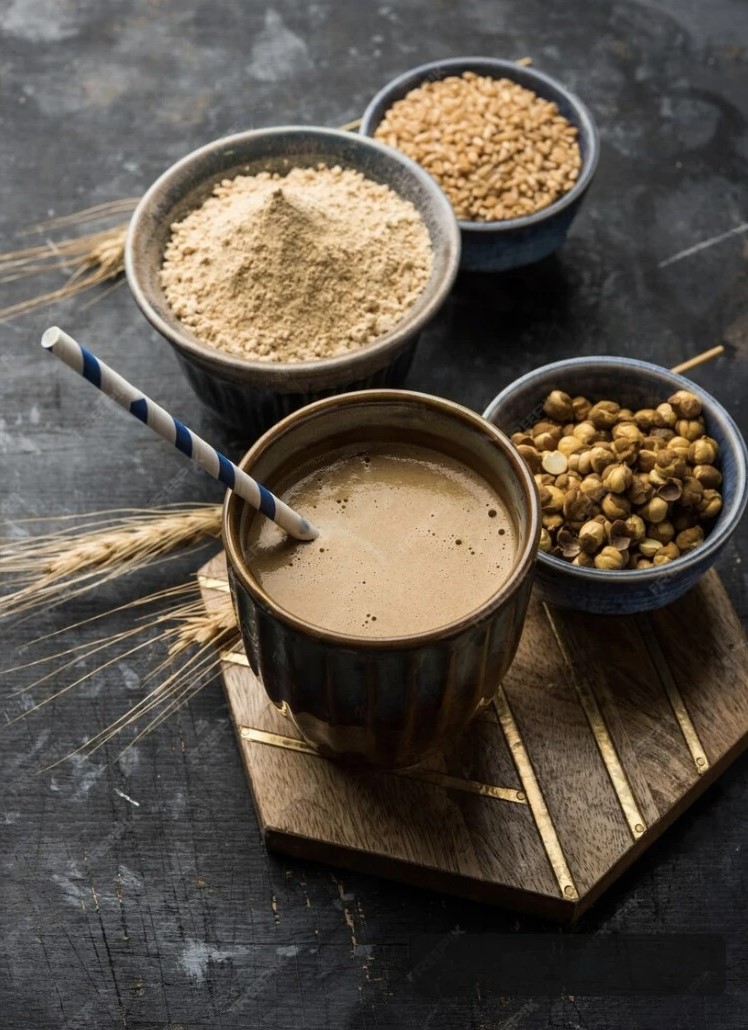Introduction:
Building muscle and increasing muscle size requires a combination of progressive overload, proper nutrition, and adequate recovery.
Understanding the principles behind muscle growth and applying them effectively will help you achieve significant muscle hypertrophy.
In this article, we will explore the science behind muscle building, the best training methods, and essential dietary recommendations for maximizing muscle gain.
Understanding Muscle Growth: The Science Behind Hypertrophy
Muscle growth, also called hypertrophy, happens when muscles face stress and adapt by getting bigger and stronger. This process mainly works in two ways: increasing muscle fiber thickness and making muscle fibers longer.
There are different types of hypertrophy:
Muscle Pump: This is a temporary swelling of muscles that happens during exercise. It occurs because fluid builds up in and around the muscle cells, making them look bigger for a short time.
Chronic Hypertrophy: This is a long-term increase in muscle size that happens with regular strength training. Unlike the temporary pump, this type of growth stays for a long time and is a result of continuous resistance training over weeks or months.
Hyperplasia: This occurs when the number of muscle cells increases. Some studies suggest that with regular strength training, muscle fibers may split and create new fibers, which can also contribute to muscle growth (Kent, 2006).

Image source: Pexels.com
When you lift heavy weights, your muscles experience mechanical tension, which forces them to work against resistance. This creates tiny tears in the muscle fibers. Your body repairs these tears, making the fibers thicker and stronger.
Another important factor is metabolic stress, which happens when muscles become fatigued from repeated contractions. This process increases blood flow, cell activity, and hormone release, all of which help muscles grow.
People are born with a set number of muscle cells, and this number doesn’t increase after a certain age. Instead, muscles grow by adding more contractile structures (myofibrils) inside the fibers or by extending their length with new sections called sarcomeres.
To build strong muscles effectively, your workout routine should include both mechanical tension and metabolic stress, along with proper nutrition and rest.
Key Training Factors for Muscle Growth
To build muscle effectively, you need to focus on different training variables. These include how many times you repeat an exercise, how heavy you lift, how much rest you take, and how long your muscles stay under tension. Let’s break these down into simple terms.
1. Sets and Repetitions
A repetition (rep) is when you perform an exercise once (e.g., one squat). A set is a group of repetitions (e.g., 10 squats = 1 set). Research shows that doing multiple sets is better for muscle growth than doing just one. Studies have found that doing 2-3 sets gives similar muscle-building results as 4-6 sets. The best approach is to train each muscle group 12-20 sets per week, which can be spread over different workout styles, such as full-body workouts, split routines, or push/pull days.
2. Intensity (How Heavy You Lift)
Intensity refers to how much weight you lift compared to your one-repetition maximum (1RM)—the heaviest weight you can lift once. For example, if your 1RM is 100kg, then lifting 75kg is 75% of your 1RM, which allows you to do about 10 reps. To find your 1RM, you can use an online calculator after testing how many reps you can do with a certain weight.

Image source: Pexels.com
3. Volume (Total Work Done)
Training volume is the total amount of weight lifted during a session. It is calculated as:
Volume = Reps × Weight × Sets
For example, if you do 3 sets of 10 reps with 50kg, your total volume for that exercise is:
10 × 50kg = 500kg, then 500kg × 3 sets = 1500kg
Higher volume leads to better muscle growth, which is why multiple sets are recommended.
4. Progressive Overload (Increasing Challenge Over Time)
Your muscles grow when they are pushed beyond their usual limits. This is called progressive overload. You can increase intensity by adding more weight. For example, if you lifted 40kg for 3 sets of 10 reps last week, try lifting 41kg this week.
This small increase makes muscles work harder, forcing them to grow. However, if progress slows, you can adjust other factors like reps, sets, or exercise variations.
5. Rest Between Sets
Resting between sets allows your muscles to recover. The ideal rest time for muscle growth is 60-90 seconds, as it lets you regain strength while keeping intensity high.
If you rest too long (3 minutes or more), it’s better for strength training, while very short rests (under 30 seconds) might lead to early fatigue.

Image source: Pexels.com
6. Training to Muscle Failure
Muscle failure happens when you physically cannot complete another rep with proper form. Training to failure can boost muscle growth, but it also increases the risk of overtraining and burnout.
A better approach is to gradually increase weight and reps over time rather than pushing to failure in every session.
7. Time Under Tension (How Long Your Muscles Work)
The longer your muscles stay under strain, the more they grow. For muscle-building, a set should last 40-60 seconds. If you do 10 reps, each rep should take about 4 seconds—2 seconds to lower the weight (eccentric phase) and 2 seconds to lift it (concentric phase).
The eccentric phase (lowering the weight) is especially important for muscle growth, so control the movement instead of letting the weight drop quickly.
By understanding and applying these training principles, you can build muscle effectively and make steady progress in your workouts.
Nutrition for Maximum Muscle Growth
Optimizing your nutrition is crucial for maximizing muscle growth. Key components include adequate protein intake, sufficient carbohydrates for energy, healthy fats for hormonal balance, and proper hydration.
1. Protein Intake: The Building Block of Muscle
Protein is essential for muscle repair and growth. Research indicates that consuming approximately 1.6 grams of protein per kilogram of body weight per day is effective for maximizing muscle protein synthesis.
High-quality protein sources include:
- Lean meats (chicken, turkey, beef)
- Fish (salmon, tuna)
- Dairy products (Greek yogurt, cottage cheese)
- Eggs
- Plant-based sources (tofu, lentils, quinoa)
2. Carbohydrates for Energy
Carbohydrates are the primary energy source during exercise, especially at moderate to high intensities. Consuming adequate carbohydrates can enhance performance and delay fatigue.
Prioritize complex carbohydrates such as:
- Brown rice
- Oats
- Whole wheat bread
- Sweet potatoes
- Fruits and vegetables
3. Healthy Fats for Hormonal Balance
Healthy fats play a role in hormone production, including testosterone, which is crucial for muscle growth. Include sources like:
- Avocados
- Nuts and seeds
- Olive oil
- Fatty fish
4. Hydration
Proper hydration is essential for optimal performance, as even mild dehydration can impair exercise ability. While individual needs vary, a general recommendation is to drink water regularly throughout the day and increase intake based on sweat loss during workouts.
By focusing on these nutritional strategies, you can support muscle growth and enhance your overall performance.

Image source: Pexels.com
The Role of Recovery in Muscle Growth
Effective muscle growth relies not only on training and nutrition but also significantly on proper recovery strategies. Key aspects include:
1. Sleep and Muscle Repair
Adequate sleep is crucial for muscle recovery and growth. Research indicates that sleep deprivation can impair muscle recovery by increasing protein breakdown and hindering protein synthesis, leading to muscle atrophy.
Additionally, sleep extension has been shown to improve performance and enhance anabolic responses, which may aid in muscle repair.
Aim for 7-9 hours of quality sleep per night to optimize these processes.
2. Rest Days and Active Recovery
Incorporating rest days into your training regimen is essential to prevent overtraining and facilitate muscle repair. Engaging in active recovery activities, such as light cardio, stretching, or yoga, on rest days can promote blood circulation and aid in the removal of metabolic waste products.
Studies suggest that active recovery can lead to faster returns to homeostasis compared to complete rest.
Scheduling 1-2 rest days per week with active recovery can enhance overall performance and reduce the risk of injury.
3. Supplements for Muscle Growth
While whole foods should remain the primary source of nutrients, certain supplements can support muscle growth:
- Whey Protein: Provides rapidly digestible protein, beneficial for post-exercise muscle protein synthesis.
- Creatine Monohydrate: Enhances strength and muscle mass by increasing phosphocreatine stores in muscles, allowing for improved performance during high-intensity activities.
- Branched-Chain Amino Acids (BCAAs): May reduce exercise-induced muscle damage and promote muscle protein synthesis.
- Beta-Alanine: Buffers acid in muscles, potentially improving endurance and delaying fatigue during high-intensity exercise.
It’s important to consult with a healthcare professional before incorporating supplements into your regimen to ensure they align with your individual health needs and goals.
By prioritizing adequate sleep, incorporating rest days with active recovery, and considering appropriate supplementation, you can enhance muscle recovery and support optimal muscle growth.
Conclusion
Achieving muscle growth and increasing muscle size requires a well-balanced approach that combines progressive resistance training, proper nutrition, and sufficient recovery.
Consistently following these principles will enhance muscle development, improve strength, and support overall fitness. By prioritizing structured workouts, nutrient-dense meals, and adequate rest, you can optimize muscle hypertrophy and achieve long-term success in your fitness journey.
References:
- https://www.tandfonline.com/doi/abs/10.1080/10408399009527522
- https://www.healthline.com/health/muscular-hypertrophy
- https://www.body-happy.co.uk/muscle-building/
- https://shorturl.at/mXucH
- https://pubmed.ncbi.nlm.nih.gov/35187864/
- https://www.mdpi.com/2072-6643/14/4/856
- https://ciss-journal.org/article/view/9347
- https://www.jsams.org/article/S1440-2440%2821%2900132-8/abstract?utm_source









